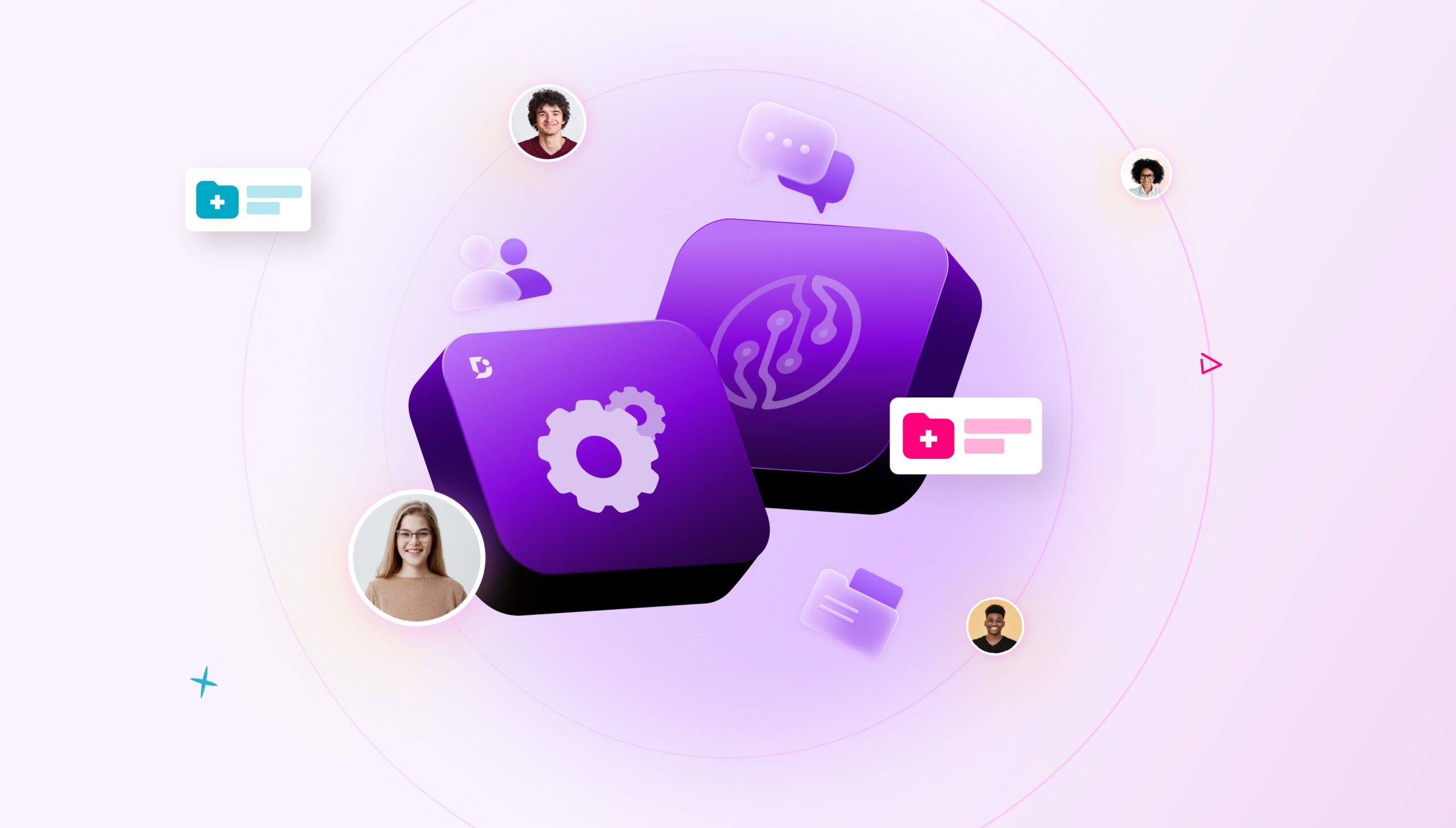Businesses have a need to collect, store and disseminate knowledge throughout their organization. We are overwhelmed with information and therefore should make the most of a Learning Management System (LMS) in order to organize business assets and support a Knowledge Management (KM) strategy.
An LMS is much more than a system to capture eLearning units and multiple-choice questions. It’s likely not being used to its full potential. There have been many developments in LMS technology in the last decade but practitioners still seem unaware of the potential in their tools.
One of the biggest advantages of the modern LMS is the ability to collect and share the best knowledge from the business. In this way it can help you with your Knowledge Management efforts, so don’t forget your LMS when executing your strategy.
An LMS is vital for enabling instructors to manage material distribution, assignments, communications and other elements of instruction for their elearning courses. LMS presents knowledge as part of the education process in a way that is flexible and easy to use.
Knowledge Management is the overall creation, using, managing and sharing of knowledge in the organization. A business should use knowledge in such a way as to improve their overall business objectives. KM spans different disciplines and should impact every team in the company. Karl Wiig defines KM as “the systematic, explicit and deliberate building, renewal and application of knowledge to maximize an organization’s knowledge-related effectiveness and returns from its knowledge assets.”
Now we’ll go through some best practices for using an LMS as part of a KM strategy.
1. Make an area for sharing knowledge
You need a dedicated area for sharing knowledge in your organization.
To properly manage your knowledge in your organization you need a platform where that knowledge can be shared. To build your company’s knowledge assets, you need a system that is easy to use and can be adapted to many different use cases.
Make a note of all the communication channels that your company uses at the moment. This can range from email, to collaboration tools, to social networks. If you’re already using a Learning Management System then your business is ahead of the curve. When you’ve discovered how knowledge is shared in your organization then you should collate the channels into a single place.
Battling against high staff turnover rates means that you need to get new employees up to speed as fast as possible. Their training should give them access to all knowledge management systems and that includes your Learning Management as the perfect place for storing organizational knowledge.
Your knowledge can’t build upon itself unless people can successfully communicate with one another. Your Learning Management System can’t just be a one-way elearning unit platform – knowledge should move in both directions and create a knowledge network. Investing in an LMS with social capabilities is the right move in allowing your staff to collaborate on the system.
2. Expand your learners
You need to get employees involved in Knowledge Management and in publishing content to your LMS.
Source
You shouldn’t just set a platform into the wild and forget about it – you need to make knowledge sharing part of your company’s DNA, from the senior leadership team down to the newest employee. It’s hard to know how to engage people with your Learning Management Platform but there are a number of ways you can increase interaction from employees.
Introduce elements of gamification to your system – offer digital prizes such as badges and points in exchange for employees sharing their knowledge. Humans are naturally drawn to collect these rewards and will be motivated to interact with your system. A leader board displaying whoever has earned the most points makes it into a gentle competition. Whoever collects the most points can be rewarded with monetary compensation or extra vacation days.
To ensure everyone in your company stays engaged with your platform you need to give them a feeling of ownership over the knowledge. It’s important for them to understand how the knowledge they share fits into larger business objectives. Allowing employees to customize their profiles means each employee can add their own unique fingerprint to your LMS.
These pages owned by your users can also be used as a way to display their work. This might be the first time many employees have shared their knowledge on the LMS. Use this opportunity as a way to reinforce the value of sharing knowledge and the importance of employee participation. They can publish blog posts after they go to conferences, for example, and share their learnings with other employees.
An intuitive knowledge management software to easily add your content and integrate it with any application. Give Document360 a try!
Get Started
3. Create your knowledge assets
After getting employees engaged with your Learning Management System, you now need to find and store the knowledge within the company. This is a task that can take a very long time depending on the size of your business and number of employees – it’s probably too much scope for one person to handle on their own. This is where you need to seek out the Subject Matter Experts in your business and make use of their knowledge.
Many of your Subject Matter Experts may not even be aware that they possess the expertise you’re looking for. A social LMS means finding the employees with the right knowledge is fairly easy since you just look for the users who participate the most in conversations. You can find out who has the knowledge but also you’ll be turned on to those who are most willing to share with their coworkers.
Once you’ve found out who your experts are you need to make sure other employees can locate them too. If you make a forum for experts on the platform, employees can easily find those peers who can answer their questions. Being able to earn this status on the platform is motivating for your users, and they are more likely to share their knowledge if they can earn the name “expert”.
4. Understand the work is never done
Knowledge Management in your Learning Management System is not something that you do once and forget about. It’s an ongoing process of development and maintenance, as old knowledge becomes out of date and new knowledge becomes available. Employees are your most powerful source of relevant content since they are dealing with the realities of their job on a daily basis.
Allow your employees to rate and review your content so you can gather feedback on its effectiveness. The target audience of your knowledge is in the best position to gauge the usefulness or relevance of each knowledge asset, and they can tell you if anything needs changing. This means that outdated content is more likely to be caught and can be brought into line with changes in your business.
Perhaps the easiest way to get employees sharing knowledge is to just ask them. Add a task to your learning curriculum asking employees to make their own knowledge asset. This content from users makes the training program more valuable and gives employees a stronger feeling of ownership over the LMS.
Final remarks
A Knowledge Management strategy can be supported by your Learning Management System in a number of ways. We’ve mentioned how to make an area for sharing knowledge and then encouraging employees to contribute to your LMS. Create your knowledge assets and continually invest in maintaining and updating your content.
Knowledge Management requires the participation of the whole organization to make it a success and the LMS can be a good way for employees to take part. Combine this with an internal company knowledge base for better knowledge sharing and retention.
An intuitive knowledge management software to easily add your content and integrate it with any application. Give Document360 a try!
Get Started





 –
– 

